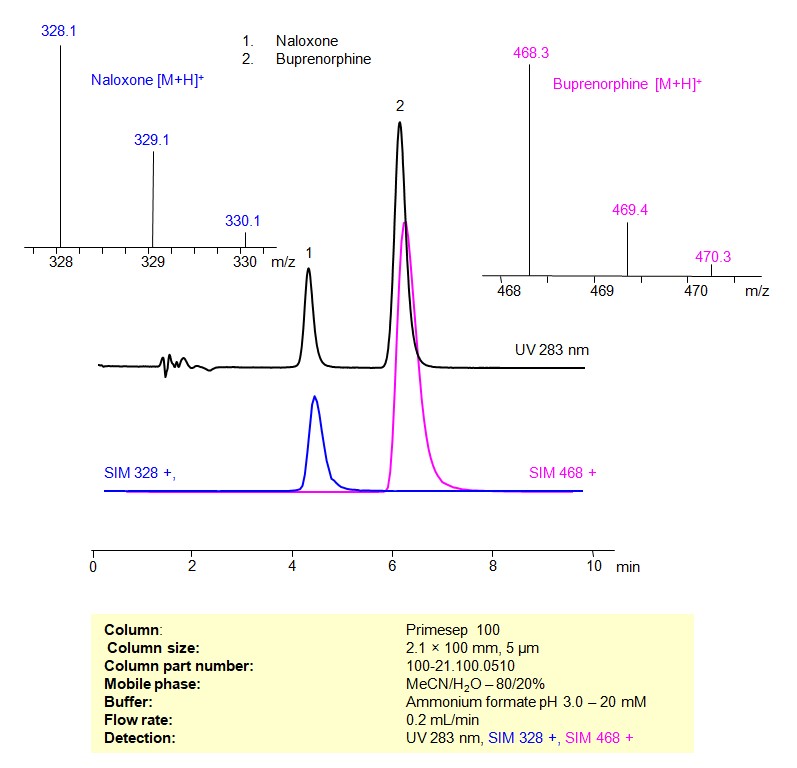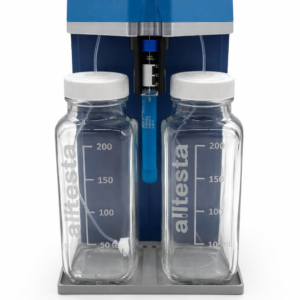HPLC Method for Analysis of Naloxone, Buprenorphine on Primesep 100 by SIELC Technologies

High Performance Liquid Chromatography (HPLC) Method for Analysis of Naloxone, Buprenorphine
Naloxone and buprenorphine are both medications with distinct pharmacological profiles, but they are often used together in the treatment of opioid dependence.
Naloxone:
Use: It is primarily used to reverse opioid overdoses. When administered during an overdose, naloxone can quickly restore normal respiration by binding to opioid receptors and preventing opioids from activating them.
Buprenorphine:
Use: Buprenorphine is used for pain management and as a treatment for opioid dependence. As a partial agonist, it can activate opioid receptors but not to the same extent as full agonists like morphine. This property allows buprenorphine to reduce cravings and withdrawal symptoms in individuals with opioid dependence without producing the same intense “high” or dangerous side effects as other opioids.
Combination in Treatment:
Buprenorphine and naloxone are combined in products like Suboxone. The purpose of this combination is to provide the therapeutic benefits of buprenorphine for opioid dependence while discouraging misuse. If someone tries to dissolve and inject the combination, naloxone will block the effects of buprenorphine and potentially induce withdrawal, thereby acting as a deterrent to this route of misuse. However, when taken sublingually as prescribed, the naloxone component has minimal bioavailability and thus minimal effect, allowing the buprenorphine component to exert its therapeutic action.
Naloxone and buprenorphine can be retained, separated and analyzed on a Primesep 100 mixed-mode stationary phase column using an isocratic analytical method with a simple mobile phase of water, Acetonitrile (MeCN), and a ammonium format as a buffer. This analysis method can be detected using UV at 269 nm, an Evaporative Light Scattering Detector (ELSD), or any other evaporative detection method (CAD, ESI-MS)
| Column | Primesep 100, 2.1 x 100 mm, 5 µm, 100 A, dual ended |
| Mobile Phase | MeCN – 80%, |
| Buffer | Ammonium Formate pH 3.0-20 mM |
| Flow Rate | 0.2 ml/min |
| Detection | UV, 283 nm, SIM 328 +, SIM 468 + |
| Spray Voltage: | 1.5 kV |
| Nebulizing gas: | 1.5 L/min |
| Drying gas: | 15 L/min |
| DL temp: | 250 ˚C |
| Heat Block: | 400 ˚C |
| Class of Compounds | Drug, Opioid antagonist, |
| Analyzing Compounds | Naloxone, Buprenorphine |
Application Column
Primesep 100
Column Diameter: 2.1 mm
Column Length: 100 mm
Particle Size: 5 µm
Pore Size: 100 A
Column options: dual ended
Naloxone





